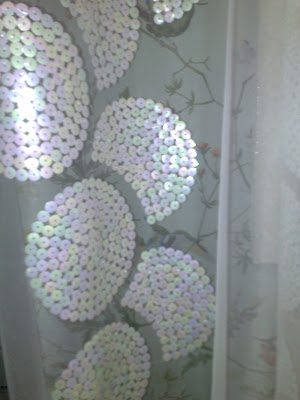Here is a little bit about
Himroo weaving because I think it should be appreciated. Himroo is a fabric
made of silk and cotton, grown and woven together with silver threads in
Aurangabad, India. Hand-woven Himroo was established in the reign of Mohammad Tughlaq
when the capital moved to Aurangabad from Delhi. In the 14th century, Himroo
was developed as a cheaper alternative to Kam Khab, which was woven with pure
gold and silver threads for Royalty. Himroo originated from the Persian word
Hum-ruh which means 'similar'. Today, most Himroo shawls and saris are mass
produced using power looms and sadly hand-woven Himroo is a dying trade. I
managed to find the Paithani Weaving Centre with the help of my lonely planet
guide, where there is a show room and you can watch the process of hand-woven
Himroo. I did not go to the Paithani Centre to buy anything originally, but I
left having purchased some beautiful hand woven items which I will keep in by
bottom drawer!
The gentleman sat at the loom weaving was elderly and the lighting was poor. But he was sweet natured and smiled lots despite the dingy conditions. With the help of a translator I was told this man was the last of his family to continue working in the trade. This was upsetting to hear because the products he showed me were beautiful. It showed a lot of care had been taken and many hours sacrificed to create some of the hand-woven Himroo pieces. I was told that nobody else in his family learned the skills to produce hand-woven Himroo because it was a dying trade due to the power looms. Many of these items will end up being bought by museums because many people in India cannot afford to pay for the hours which have gone into making Himroo.
I was told this piece had real gold inserted and will take up to a year to complete. The template for the design on the fabric was inserted underneath as a guideline. This part had already taken 3 months.
 |
| Above is a close-up of one of the cloths I bought which I feel very excited about. |
 |
| Above is a close-up of one of the cloths I bought. |
 This piece, as well as the item above was inspired by the Ajanta Caves nearby. If you look at this photograph (right) you can see the resemblance in the design work. I thought this was really special because I had been to the Ajanta caves a few days before. I was blown away by the 29 caves carved into a rock side in 200 BC. The caves still include the original art work and sculptures.
This piece, as well as the item above was inspired by the Ajanta Caves nearby. If you look at this photograph (right) you can see the resemblance in the design work. I thought this was really special because I had been to the Ajanta caves a few days before. I was blown away by the 29 caves carved into a rock side in 200 BC. The caves still include the original art work and sculptures. 

























































